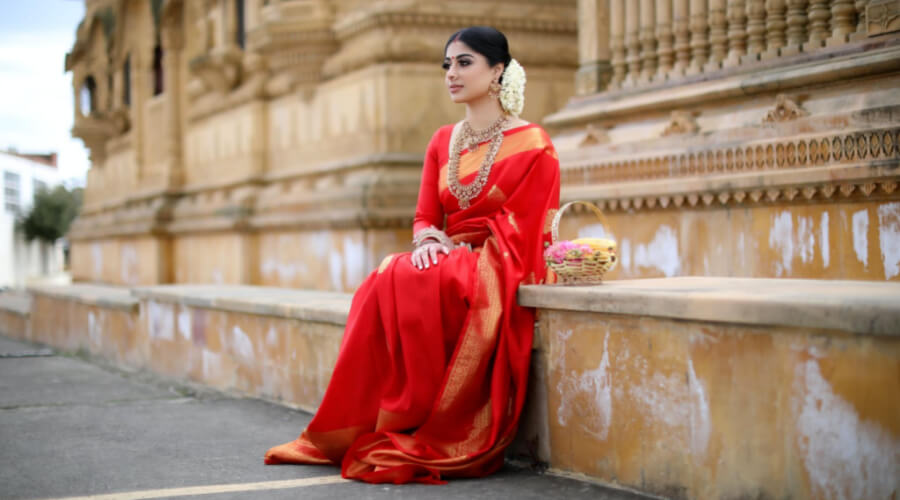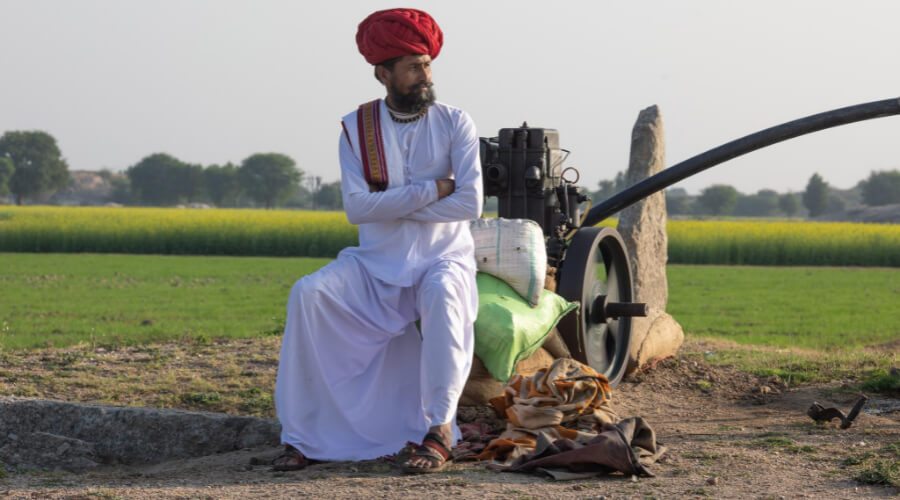Traditional clothing is important for every culture as it represents the region’s history and identity. Although traditional clothing isn’t everyday wear in some cultures as it is an unofficial uniform, it is compulsory for men and women in other cultures and is worn only on ceremonial occasions. Clothing is not just any material stitched together to protect people, but it is a signifier of their identity. Over the centuries, different communities have used clothing to establish status, celebrate important festivals and exhibit unity, and much more. This article will highlight some of the traditional clothing globally.
The 7 Prominent Traditional Clothing
Sari

Sari is a traditional garment worn by Indians, Sri Lankans, Pakistani, Bangladeshi, and Nepali women. Sari or saree is usually five meters long and is a single piece of cloth. Women wear it with a matching blouse and a skirt. The end of the sari length is stitched with matching fabric and is called a fold.
The fold helps the sari stay intact from down. The women wear the skirt underneath the sari. After wearing the skirt, the other end of the sari is wrapped around the waist to form a skirt. The sari can be wrapped once or twice around the waist, depending on the body size. The leftover is pinned over the shoulder or used to cover the head.
Back in the day, most married women would cover their heads with the sari. They wouldn’t show their face in front of the husband and elderly family members. For everyday wear, women wear simple cotton sarees. There are geographical differences in how a sari is worn depending on where the women in India reside.
Different styles include Bengali, traditional, Maharashtrian, Mumtaaz, etc. Draping a sari is an art and requires a lot of practice. Saris are made of different fabrics, including chiffon, silk, flowing crepes, and georgette.
Saris are in all color types, and some even have a mix of colors. Some saris are printed, whereas others have some handwork embroidery on them.
These days the culture has changed, and not many women wear saris every day. Women mainly wear saris on special occasions, festivals, or outings. The sari draping has evolved and is modern, although many women prefer traditional wear. The sole difference is that they do not cover it over their head.
Dhoti

Dhoti is one of the traditional Indian clothing worn by men. A dhoti is a broad loincloth that is worn, and the underside is wrapped to the front via the left side and tucked in firmly at the front waistline at the navel.
Some men pleat it at the front. There are different ways of wearing the dhoti that represents different parts of India.
In the Indian culture, there are different types of clothing that represent different parts of India. Other clothing includes kurtas, chania cholis’, lenghas, and much more. Much modern clothing has been introduced, such as palazzos and lachars.
Kimonos
Kimono means ‘something to wear’ and derives from the Japanese culture. It signifies the traditional full-length robes worn in Japan during festivals and other occasions. In the 3rd century, the Japanese used to wear a kantoi which used to be a one-piece sleeveless dress.
The traditional kimonos are hand-stitched, and some machine-stitched kimonos need substantial hand-stitching. All Japanese, irrespective of age and gender, wear kimonos; even babies wear kimonos as soon as they learn to walk at least once in their lifetime.
They also wear yukatas, although the Japanese do not wear traditional clothing daily these days. A kimono is made of expensive fabric such as silk, and the Japanese woven it with refined techniques.
BouBou
It is an important African garment found in Senegal, Mauritania, Niger, Mali, and other Central African countries. Boubou is a wide, light garment in Wax or Bazin. It is pleasant to wear, and it is the traditional dress of the Senegalese. It is everyday wear and is also worn during occasions and festivals.
It is slipped through the head and discloses the social position, and the Senegalese make the fabric from wax, Bazin, or cotton. The neckline embroidery can be simple or detailed, and for men, it can have pockets.
Damask Bazin is used to making the most expensive Boubou. In the past, the Africans used to hand-stitch the Boubou, but these days they use a sewing machine.
Boubou for men is different. It is large, consisting of a tunic, pants, and a boubou over the head. The neck is triangular, and the material’s measurement is between nine to twelve meters.
For women, the Boubou’s tunic is wide and open at the sides and has a profuse round neckline that slides over the shoulder. Women also wear a loincloth and a scarf called ‘moussor,’ worn in different styles.
In Mauritania, the Boubou is blue with golden embroidery worn by men. They pair it with puffy pants called harem pants.
Ponchos
Ponchos originate from South America along the Andes Mountains. It is a sleeveless garment that is unsewn from the sides and passes through the head. Poncho is an important cultural icon for some native people.
The native people have formed the biggest group of Indians in South America. The poncho used to be an item of traditional clothing that the Mexicans made to protect the body and keep warm from unfavorable weather conditions while still having the freedom to work comfortably.
In the olden times, many countries in South America used to wear ponchos all year round. It is comfortable to wear and doesn’t need buttons or clasps, and it was the right attire for horse riding.
There are many poncho designs these days, but the traditional one was a rectangular piece of clothing that had an opening in the center. Some ponchos have a hood, whereas others don’t. The poncho material can be light or heavy; some are warmer and waterproof, whereas others aren’t. Ponchos are available in different colors. Nowadays, ponchos are worn as a fashion statement and are famous globally.
Quadrille Dress
It is a Jamaican folk costume worn by women during celebrations, especially when the Jamaicans perform the quadrille dance. The quadrille dress isn’t famous only in Jamaica but also in Haiti, known as Karabela. It is also famous in St. Lucia and Dominica and is known as the kwadril dress.
The quadrille dress consists of two colors; red and white, and is cotton plaid. Some dresses are maroon and white plaid. Women wear a ruffled blouse with sleeves and a head tie during the quadrille.
Male dancers wear shirts and white pants stitched from the same material as the quadrille dress. Some men wear the outfit with a headscarf similar to a turban. The quadrille dress is also called the bandana skirt.
Sarafan
The word Sarafan derives from the Persian language, but the clothing is of European origin and came to Russia in the 13th century. The original name of the dress sounded like Freyaz and was men’s clothing. Ultimately, by the 15th century, the freyaz switched the name to Sarafan but was still a man’s clothing.
It became a women’s dress later in the 17th century. The Sarafan was a long sleeveless dress, which was basic wear for women. Women often wore jewelry or beads over the sarafans.

